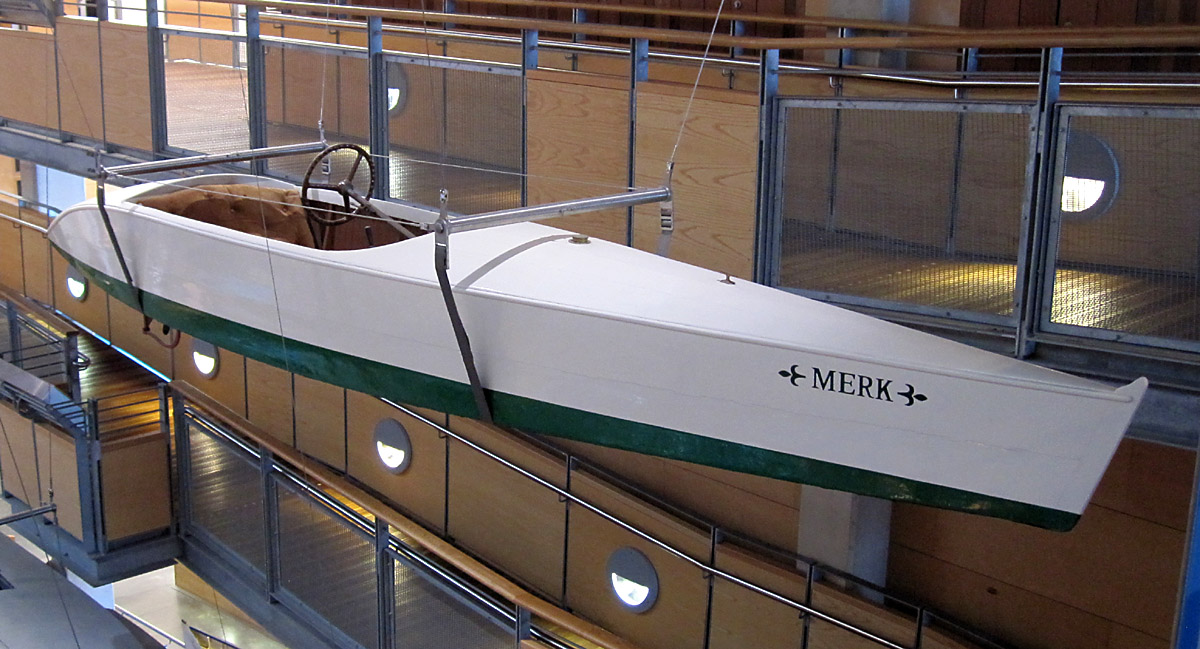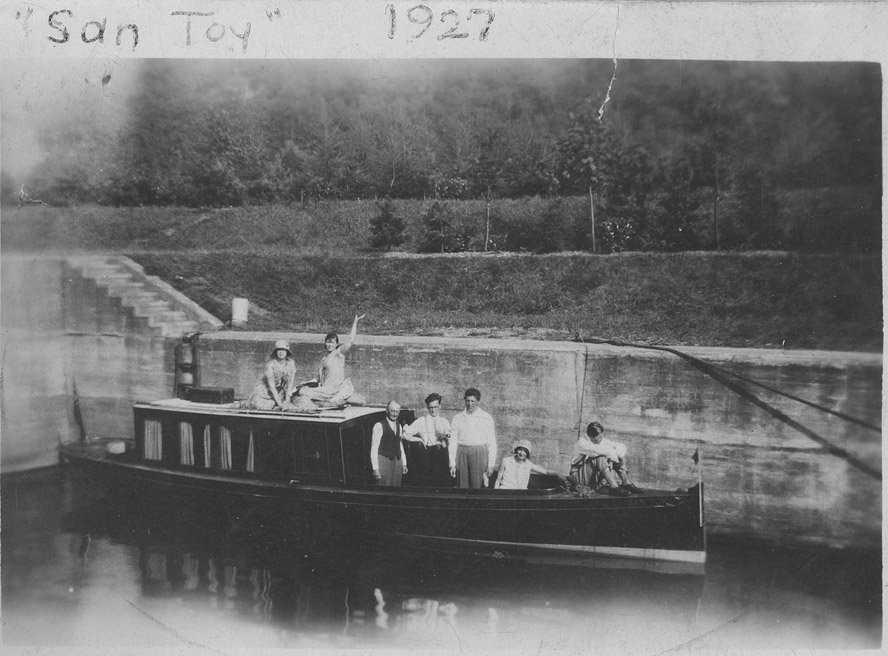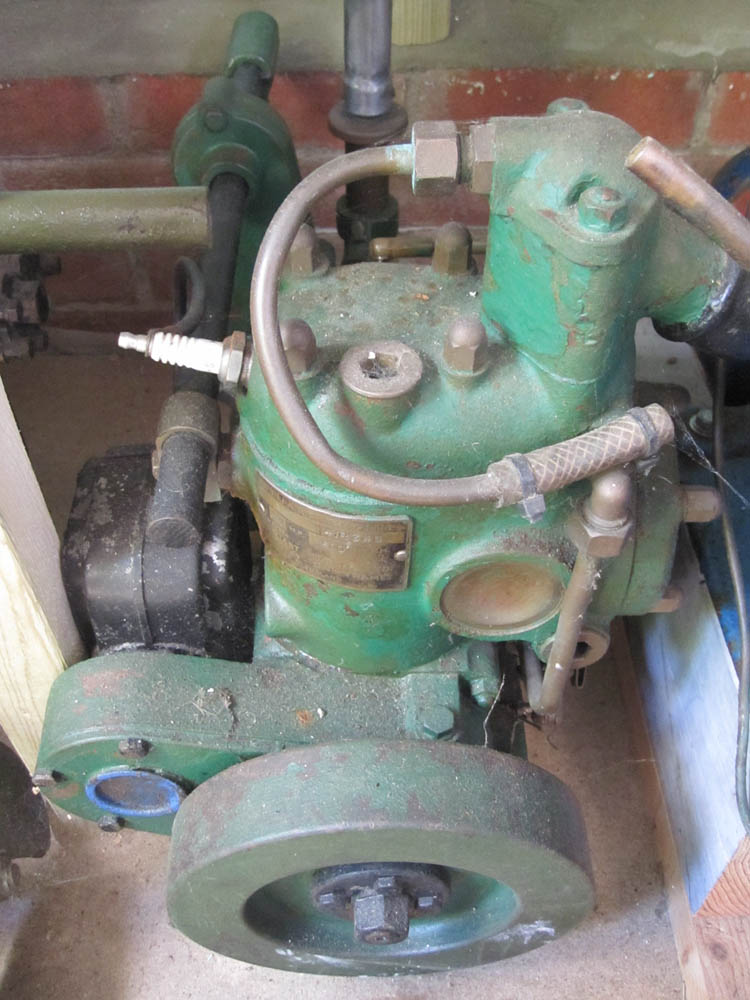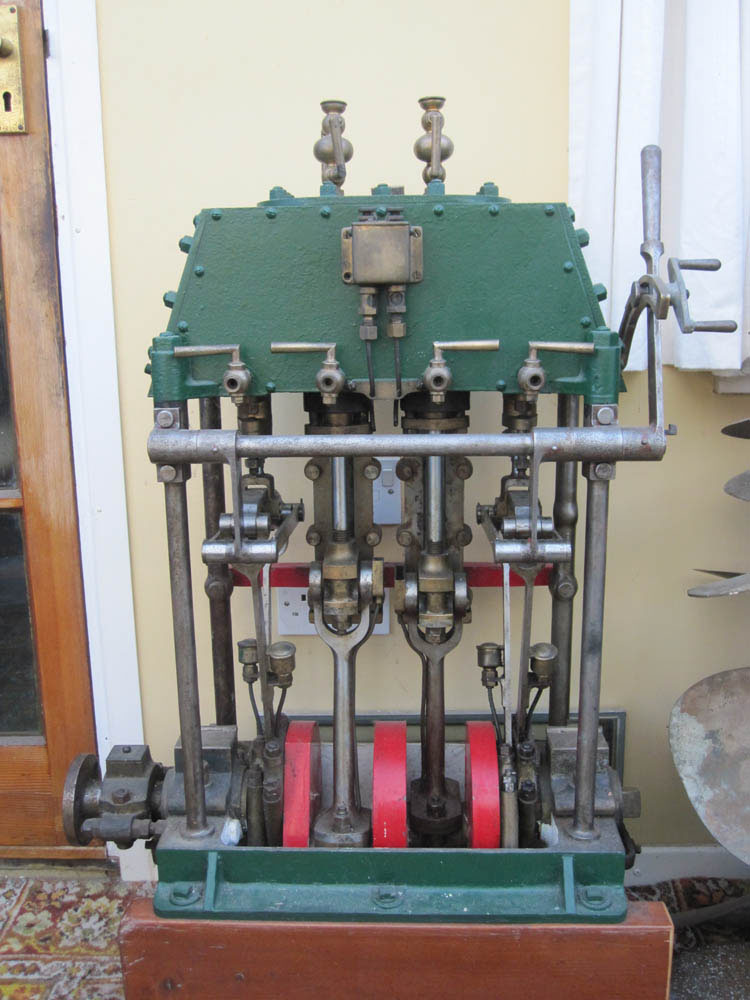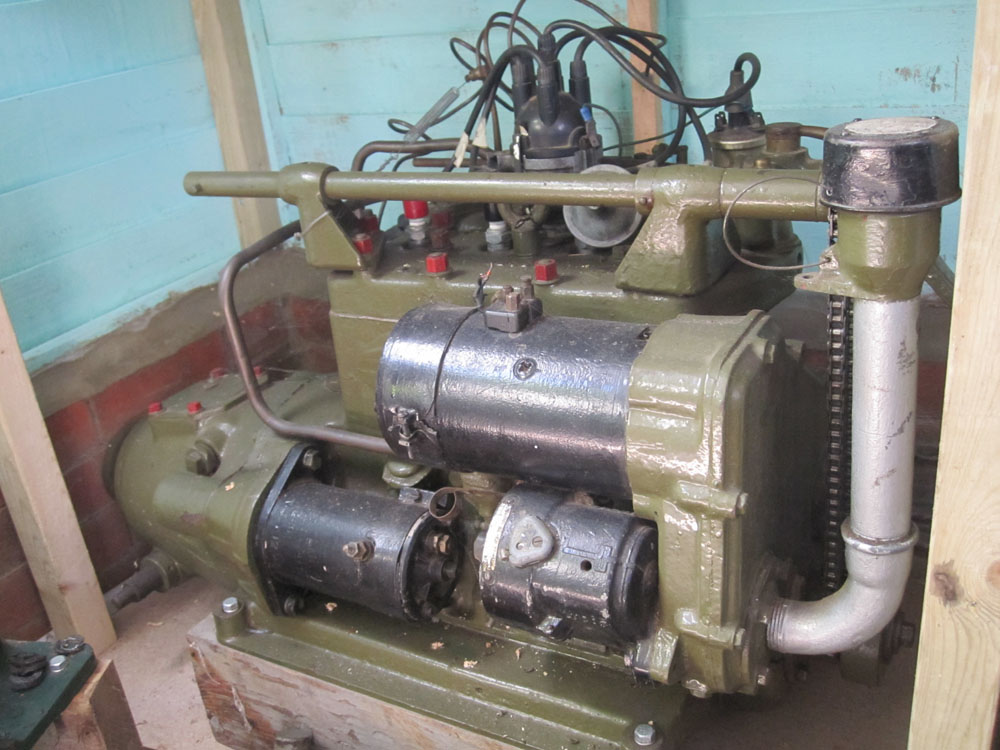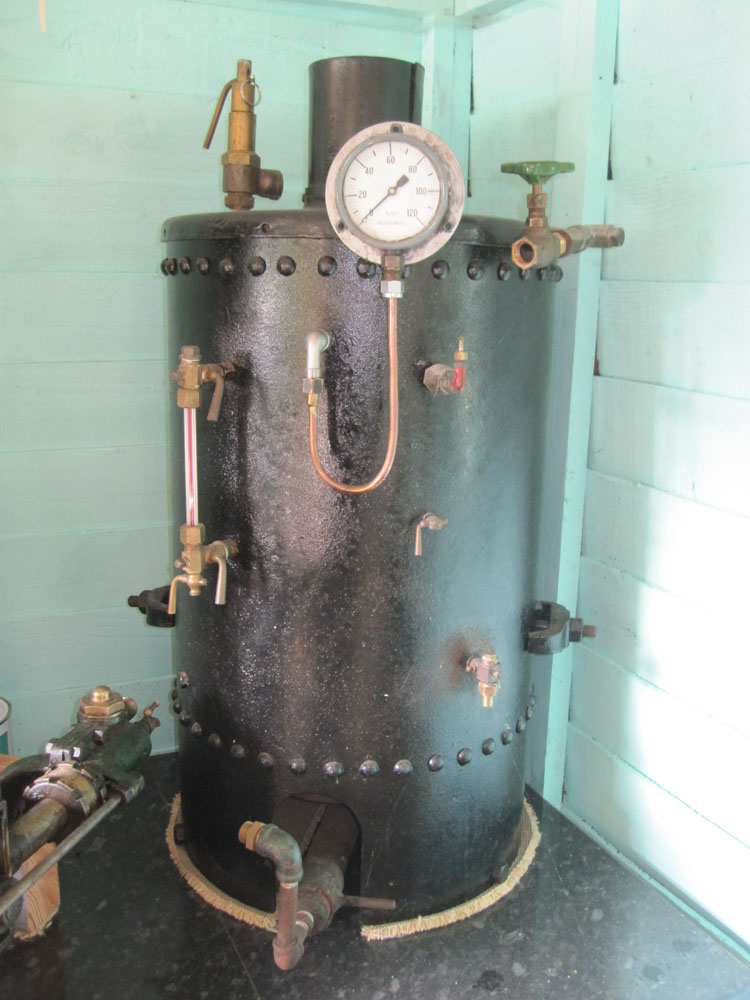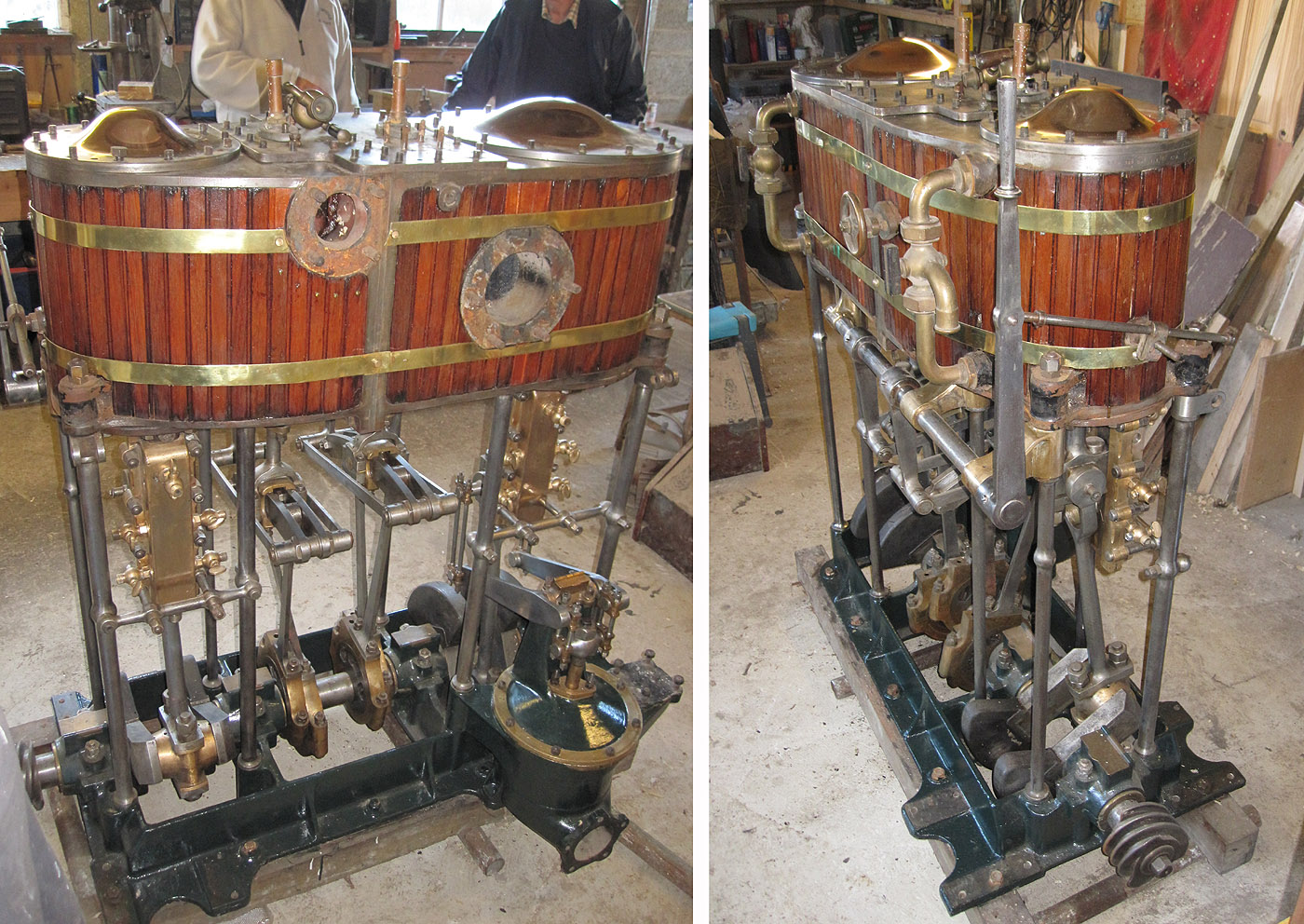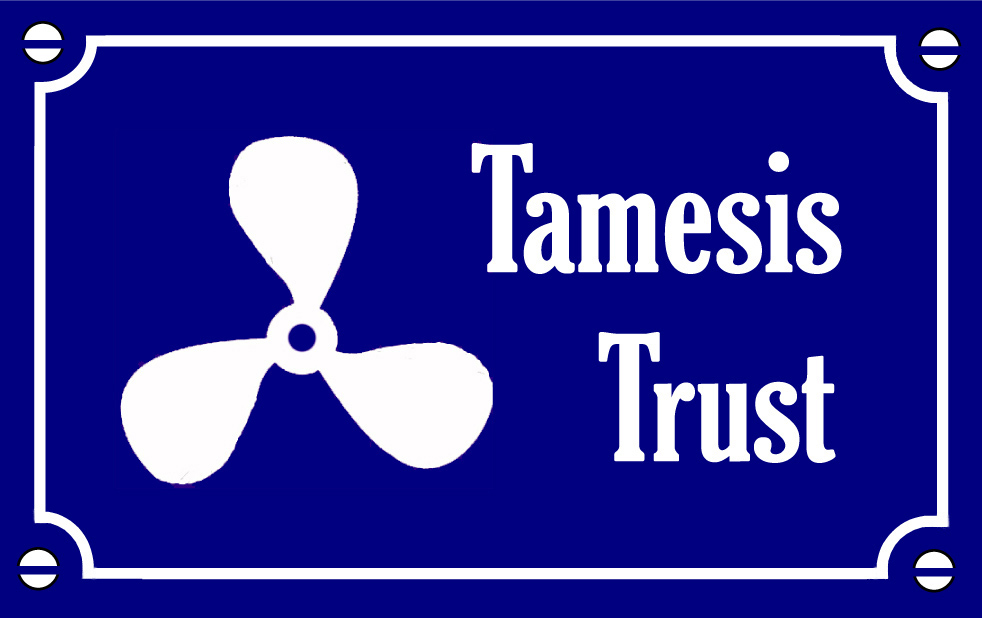Potential exhibits
Consuta51ft Steam umpire launch built in 1898 using a revolutionary new lightweight plywood construction method patented by Sam Saunders of Goring. The launch was reputed to be capable of over 27mph. Consuta was saved, restored and is managed by the Consuta Trust, and has been displayed in steam at many Thames public events since 2001. S.E. Saunders moved to the IoW and later became Saunders Roe. Consuta is to be displayed afloat in the wetdock as one of the working historic craft. For Consuta website click here |
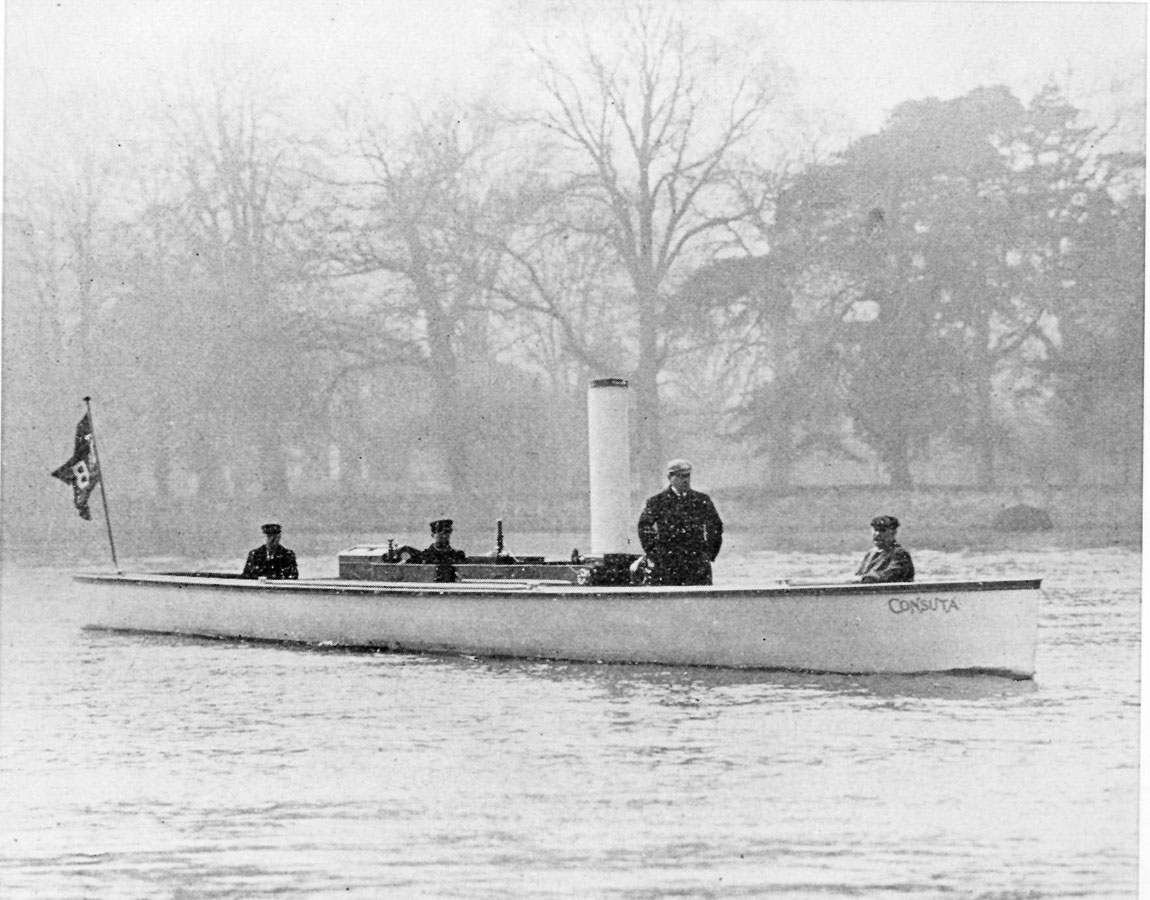 |
CygnetThe oldest surviving and completely original small Thames steam launch. This 30ft launch was built by Thornycroft at Chiswick in 1870, yard no.9. Cygnet was saved by The Thames Boats Trust with the help of a PRISM fund grant from risk of modification and loosing its originality. Cygnet is unaltered from its build date, probably because it lay stored and forgotten at Thornycroft's boatyard at Platts Eyot for 50 years and is unique because of this. To be displayed as a static exhibit For Cygnet website click here |
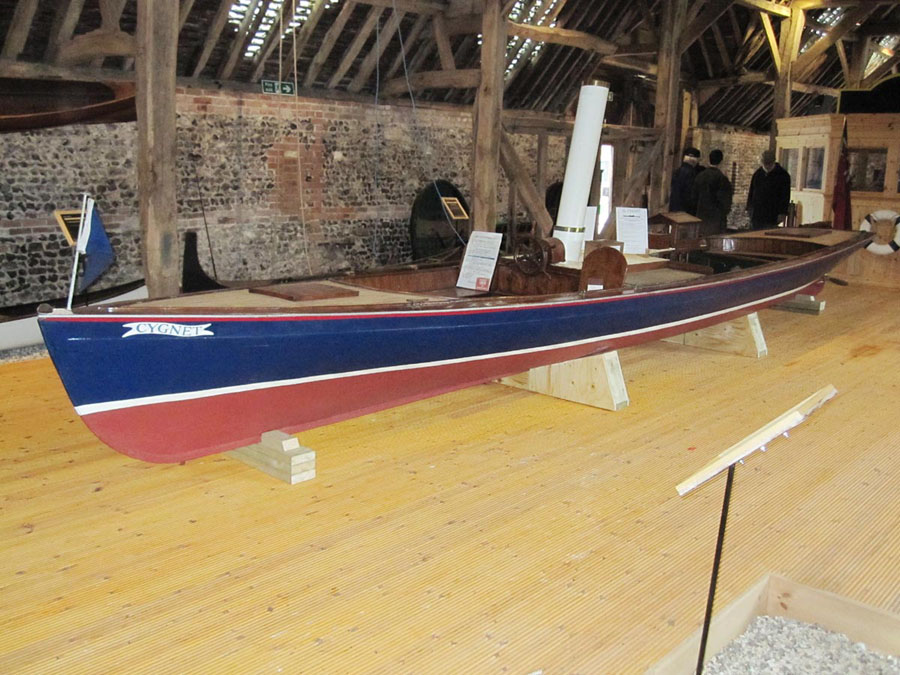 |
Donola58ft steam cabin launch built in 1894 by The Kingdon Yacht, Launch & Engineering Co. Ltd at Teddington for Mr Palmer of Huntley and Palmer's biscuit makers in Reading. The launch was first named Lodona which was later changed to Donola. Purchased by the Thames Conservancy in 1924 for use as their VIP inspection launch, a duty carried out until 1969; Donola was then presented to the National Maritime Museum. Complete with original machinery and cabin fittings, however for the last 15 years has been held at the Science Museums reserve store at Wroughton. A potential static exhibit For National Historic Ships website click here for details of Donola |
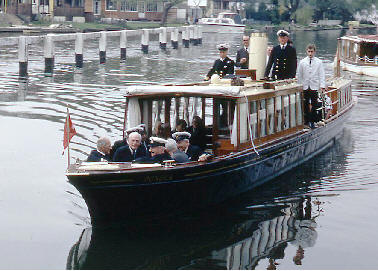 |
MerkThe first Andrews slipper style Thames launch built in 1912 with an early twin cylinder Watermota petrol engine. Donated to the National Maritime Museum and currently on display far from the Thames at the Maritime Museum Cornwall (Falmouth) A potential static exhibit For details of Merk shown on the Maritime Museum Cornwall website database click here |
|
San ToyA 35ft Thames steam day launch built in 1900 for Marie Tempest, a famous actress who was playing at Daly's Theatre London in the international hit musical San Toy. This show ran for three years. Originally steam then converted to petrol paraffin engine in 1911, restored as a steamer 1971. Privately owned, photo taken 1927 To be displayed as a working exhibit afloat in the wetdock For SBA website boat register click here then search for "San Toy" |
|
UlulaHull sections of a 30ft Saunders stitched motorboat hull early 1900's. This hull was thought to have been burnt at a boatyard in 2000 but fortunately had laid there forgotten. Recovered in 2013. Temporarily rescued in the hope of being used as a static display showing the use of Consuta plywood for achieving lightweight boat construction. The photo shows a similar launch of the period |
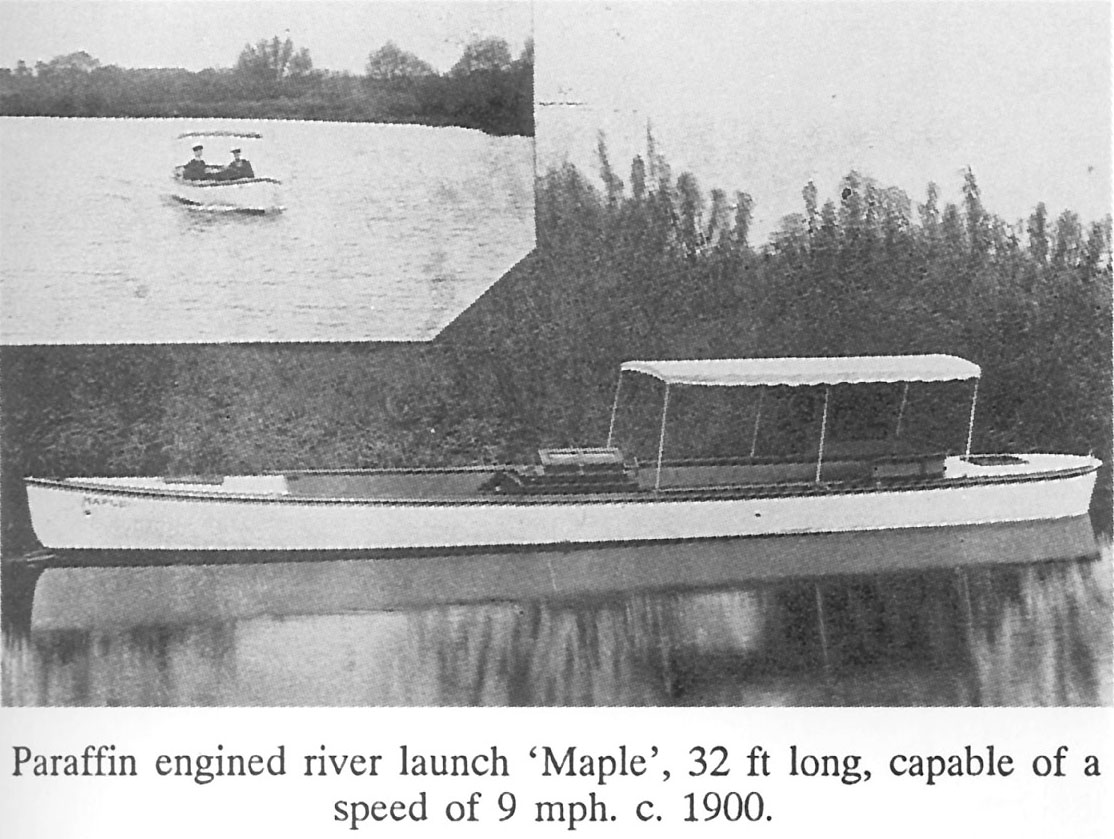 |
Twin Cylinder Petrol engineS.E. Saunders 2 cylinder two stroke petrol engine designed in 1925 for use in river punts and small motor boats. Purchased for future museum display. Static exhibit |
 |
Thornycroft twin cylinder steam engineThornycroft compound engine built 1889 with cylinders 5.1/2" + 9" x 7" developing 44 HP, steam was provided by a WT boiler. The engine was fitted to a 60ft shallow draft tunnel stern Thames steamer named Aurora. Aurora was capable of 15 mph and was used for experiments about the use of tunnel sterns. Weights were added to the bow in order to raise the stern during the tests. There are more details of these experiments in an article "Steamer for Shallow Rivers" by John Thornycroft, published in the Cassier magazine. The engine was purchased from the Thornycroft Society (Basingstoke) for future museum display. |
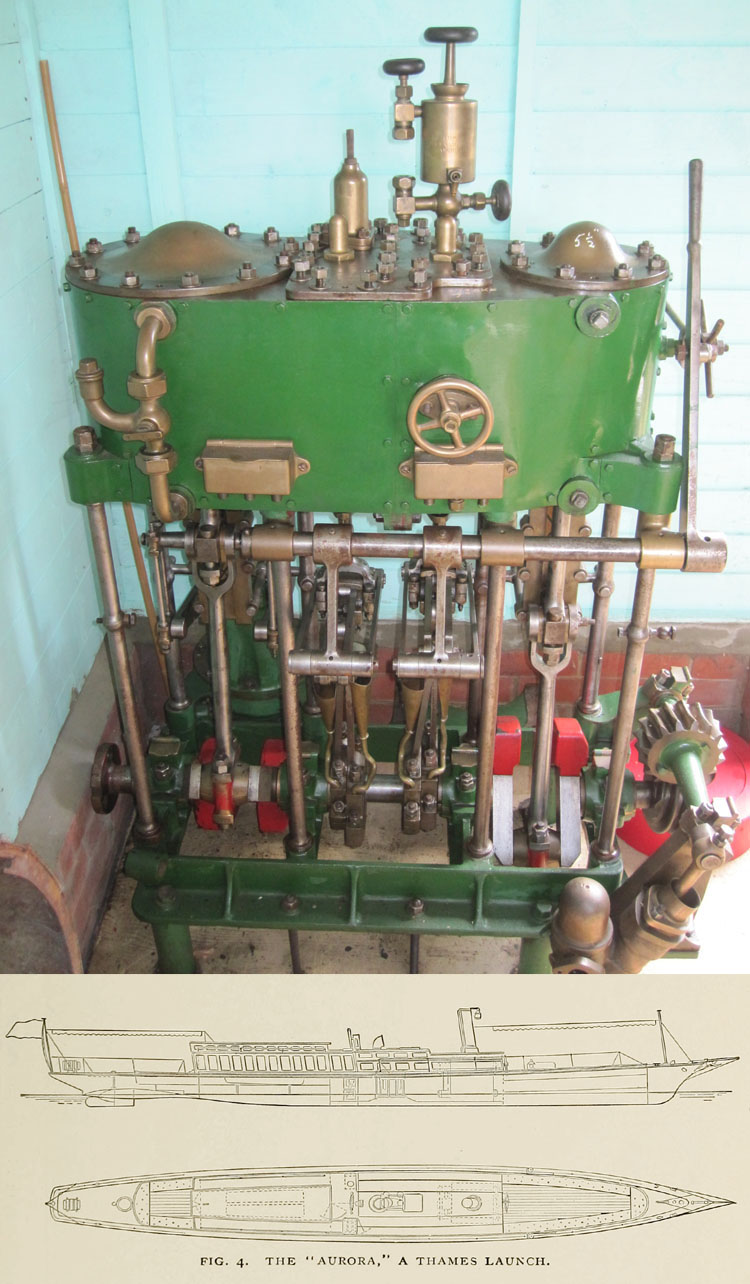 |
Gray Marine petrol engineSix cylinder Gray Marine petrol engine of the 1930's removed from Consuta in 1971, typical of the type found in Umpire Launches of the period and other larger river craft. The photo shows the petrol Engine casing and steering wheel of Consuta removed in 1970's for show at a public event. Engine recently rediscovered and saved for future museum display. Static display |
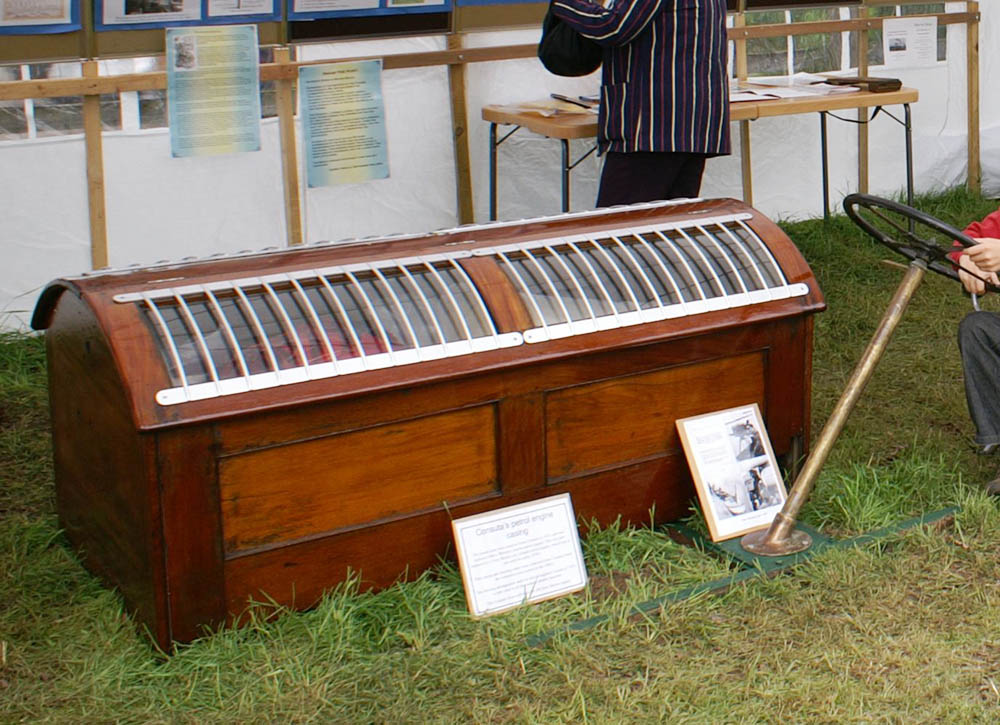 |
Marine electric motorsCanoe motors from the 1900's. Rescued in 1970's from an old boatyard by a collector in the hope that they could be put on display in a suitable museum. Static exhibits |
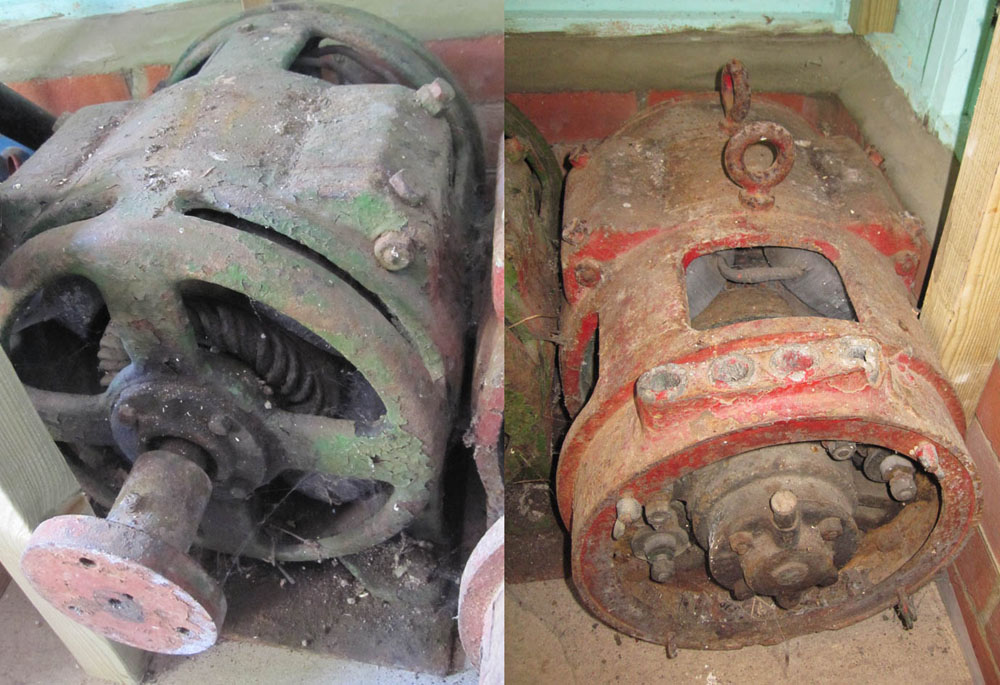 |
Steam Launch BoilerThornycroft locomotive style boiler with smoke box and fittings dating from the 1870's. Fitted with copper firebox and brass fire tubes. Thought to be the original boiler for the steam launch Eva, currently displayed at the River and Rowing Museum Henley. This boiler was rescued from a scrap yard for use as a museum exhibit. Donated to the Consuta Trust when the owner heard about the proposed museum project. Static exhibit |
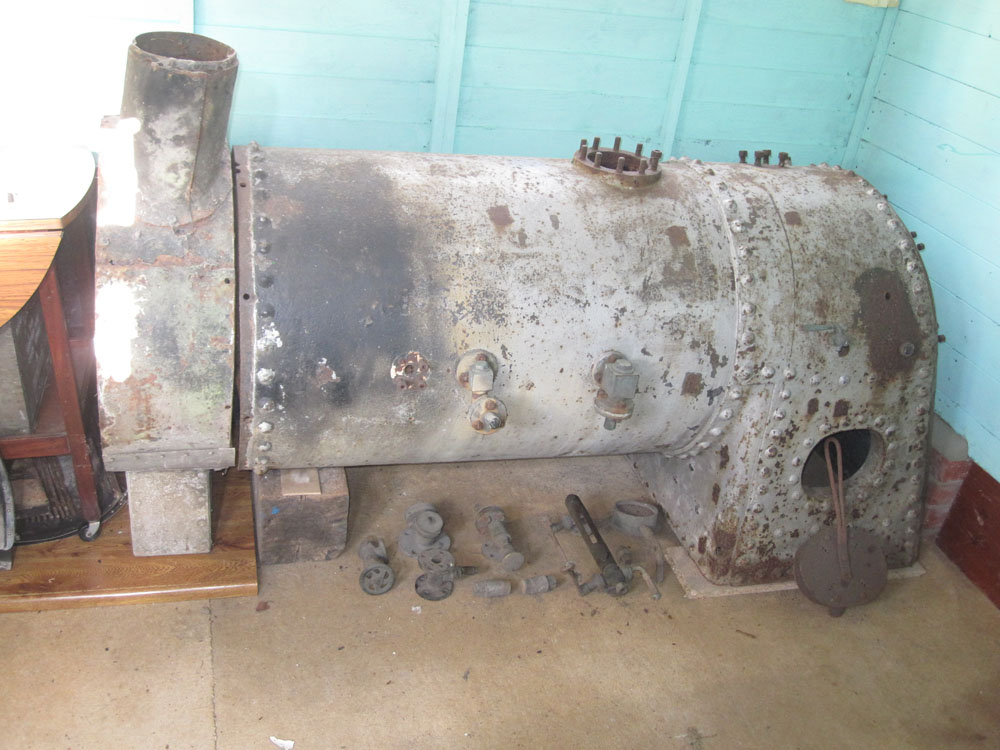 |
Stuart Tuner petrol marine engineAn example of a small boat two stroke petrol engine built at Henley by Stuart Turner, Stuart Turner produced a prolific variation and quantity of these small engines from their Henley works, built from about 1930's. Purchased for future museum display as a static ehibit. |
|
Steam launch engineVery early single cylinder steamboat engine from about 1840's. The engine plate states "Improved launch engine by S. Smith Engineer of 11 West Street, Soho London." This engine pre-dates the more prolific Thames boat and engine builders such as DesVignes, Thornycroft and Yarrow, and is the earliest marine steam engine we know. Donated by a collector for display in a suitable museum as a static exhibit |
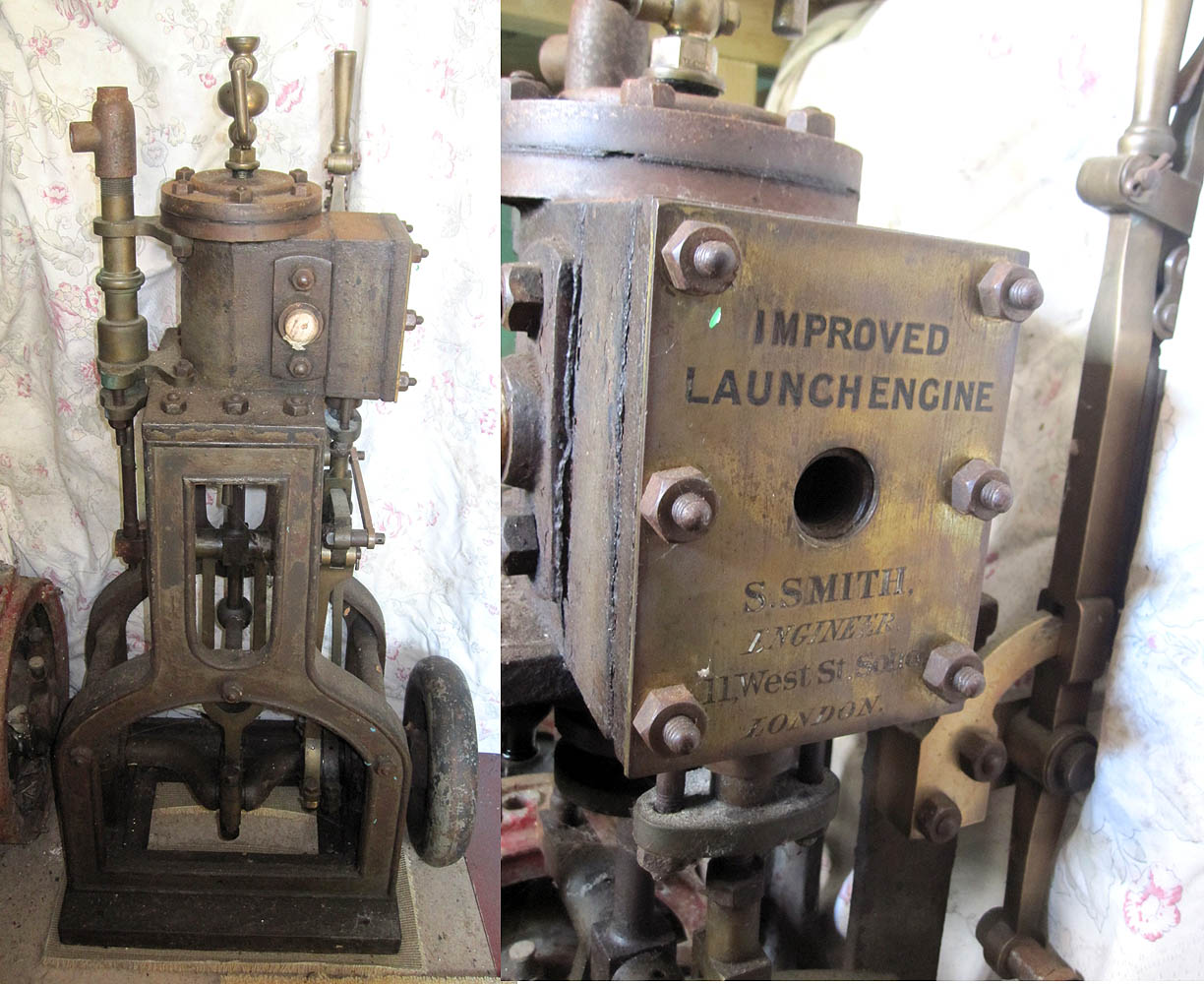 |
Twin cylinder Steam launch engineS.E. Saunders twin cylinder steam engine, date unknown, probably built at Goring in the 1880's. Purchased and donated by the owner for future museum display as a static exhibit |
|
Four cylinder marine petrol engineMorris Vedette four cylinder side valve petrol engine probably built in the late 1930's. Converted from magneto to coil ignition. Removed from a Thames Slipper launch, and is representative of the type fitted to these boats. Purchased for possible display in a museum. |
|
Stuart Turner boilerSmall Stuart Turner gas fired steam boiler used by Stuart Turner themselves for testing their model engines at their works in Henley Rescued from a skip in 2008 and donated to the trust for future display in a museum. |
|
Sisson style three cylinder steam engineThis is a copy of a Sisson type triple expansion steam engine and is similar to those that were used in the Salters Steamers and many other boats around the country, including a few steamer launches on Windermere. Potential static exhibit. |
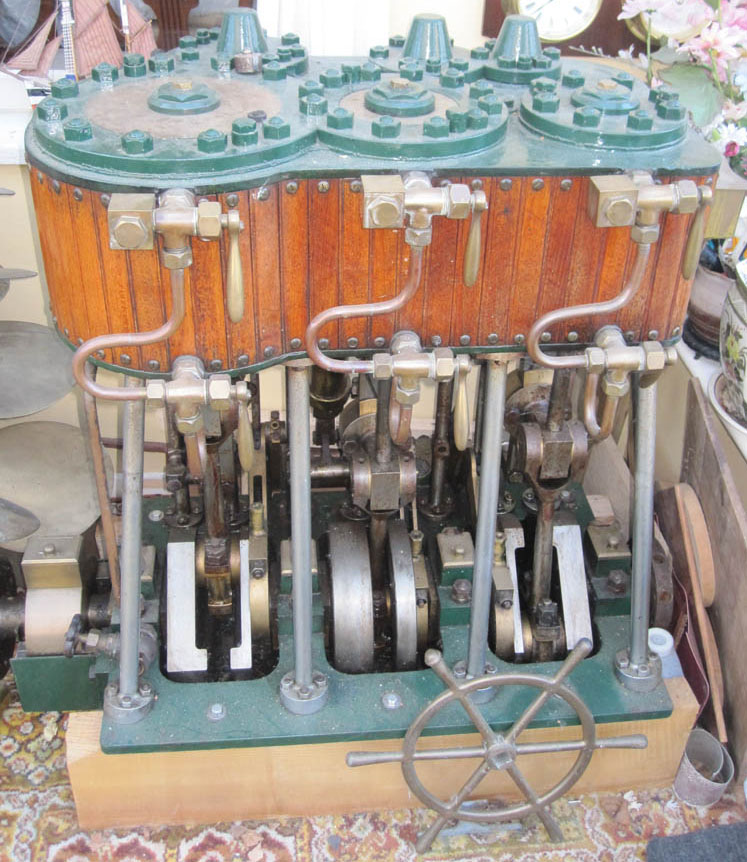 |
Torpedo boat steam engineAn example of a 2nd class torpedo boat engine built at Thornycroft's
Chiswick boatyard, in 1884, yard no 193. This engine was fitted to a 63ft TB named HMQS Mosquito
which was supplied to the Queensland Maritime Defence Force when Australia was still a British colony,
During the 1880/90's Thornycroft built over 100 various size torpedo boats at their yard on the Thames for the Admiralty and other navies around the world . Held in store for over 40 years and now restored as a future static museum exhibit. |
|
Historic document collections.Achive collections of historic books drawings, photos, catalogues and related material. The Heritage Steamboat Trust (part of the Steam Boat Association) have a very large collection of document archives which are currently held in store by four individuals on behalf of the Trust. The HST have agreed to relocate their extensive collection to the Museum. These archives have already been used for various publications by the SBA. The photos here show only a very small part of the SBA archive collection. The Goring and Streatley Historical Society wish to locate their extensive research work covering local River history about the S.E. Saunders boat building works at Streatley, Goring and the nearby old Springfield works (now a nature reserve). We know that several individuals and some local clubs would also like to contribute their own historic collections to the museum for future safe keeping |
|

